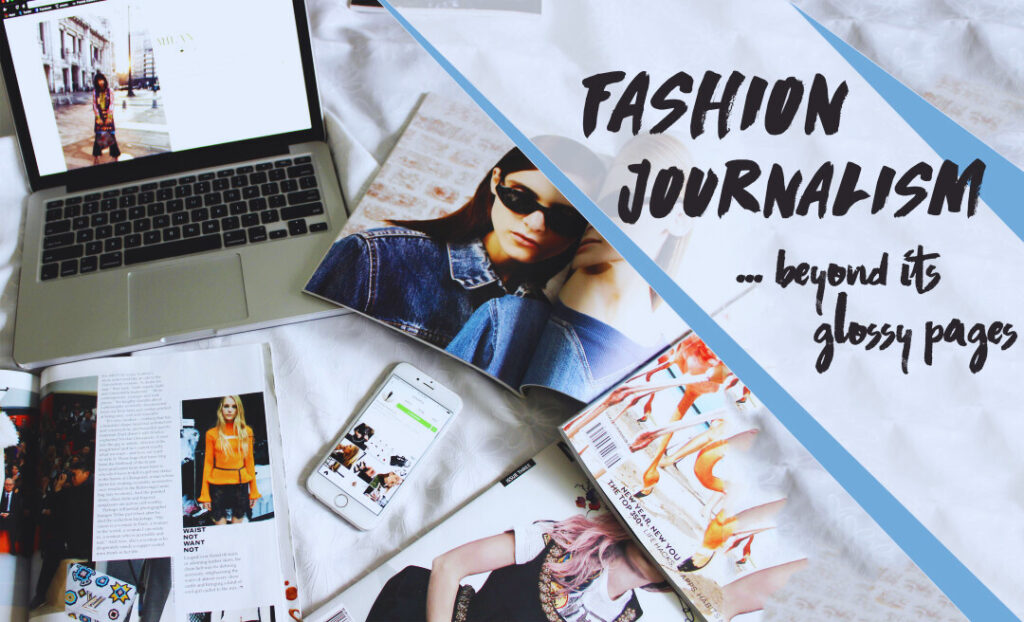In the fashion world, media illuminates trends, insights, and cultural significance in fabric and stitch. Fashion journalism transcends mere reporting; it encapsulates the fusion of creativity, storytelling, and critical analysis, offering readers a profound understanding of the fashion landscape.
The Art of Fashion Reporting
Fashion journalism merges words with visuals to tell vivid stories of style, innovation, and expression. Fashion journalists create captivating content across various platforms, resonating with diverse global audiences.
The Rise of Fashion Journalism
In the early 1900s, fashion was rarely covered as serious news. Newspapers would occasionally report on what someone wore to a charity event, but there was no dedicated focus on the business and creative aspects of the fashion industry. This changed in the 1930s when Virginia Pope, a journalist at the New York Times, began reporting on Paris haute couture, bringing fashion to the forefront of serious news coverage.
The 1940s and 1950s saw fashion journalism continue to develop, with newspapers across the United States starting to report on seasonal fashion trends and collections. However, the reporting remained relatively dry and factual, focusing on details like dress lengths and fabric types.
The Influence of Fashion Magazines
Magazines like Vogue, Harper’s Bazaar, Cosmopolitan, and Seventeen played a significant role in shaping fashion journalism during the 1960s and 1970s. As women emerged from the home and joined the workforce, these publications became essential sources of information and inspiration for fashion-conscious readers.
The rise of fashion magazines also brought a more creative and colorful reporting style, moving away from the “hard news” approach of earlier decades. Journalists began to offer their opinions and insights, shaping public perception of the industry.
Navigating Trends and Transformations
In the fast-paced realm of fashion, staying abreast of trends and transformations is paramount. Fashion journalists serve as cultural observers, deciphering the nuances of runway shows, street style movements, and designer collaborations. Fashion journalists decode fashion’s language, offering insight into trend influences.
Bridging Fashion and Culture
Beyond its aesthetic allure, fashion is deeply intertwined with culture, history, and societal shifts. Fashion journalists act as cultural ambassadors, exploring the intersectionality of fashion with politics, identity, and global events. Fashion journalists explore fashion’s socio-cultural impact, enriching readers’ understanding of society.
The Rise of Digital Fashion Media
The advent of the internet and digital media has had a profound impact on fashion journalism. Bloggers and vloggers, unencumbered by the constraints of traditional print media, were able to share their ideas and perspectives with a global audience. This democratization of fashion reporting has led to a more diverse range of voices and opinions being heard.
At the same time, traditional fashion publications have adapted to the digital landscape, offering online content and subscriptions. The focus has shifted towards visually-led storytelling, with social media platforms like Instagram playing an increasingly important role in fashion journalism.
For more information, read: Power of Motivation in the Fashion Industry
Ethical and Sustainable Fashion Advocacy
Fashion journalism advocates for sustainability and ethical practices in the industry amidst an era of environmental consciousness and ethical consumerism. Fashion journalists use investigative reporting and commentary to raise awareness about labor rights, supply chain transparency, and fast fashion’s ecological impact, empowering readers to make informed decisions and foster positive change.
Embracing Diversity and Inclusivity
Fashion journalists champion diversity and inclusivity, celebrating beauty, identity, and style across cultures. Fashion journalists amplify marginalized voices, challenge beauty norms, and champion representation, fostering an inclusive fashion landscape that resonates with diverse audiences.
Key Skills for Fashion Journalism
Strong Writing Skills: Fashion journalists need to be able to write engaging, informative, and compelling articles that captivate readers. This includes the ability to write, edit, and proofread effectively.
Fashion Knowledge: A deep understanding of fashion history, current trends, designers, and the overall fashion industry is essential. Fashion journalists need to stay updated on the latest developments.
Research Abilities: The ability to conduct thorough research, gather information, and uncover exclusive stories is crucial. Fashion journalists must be able to find and verify facts.
Communication and Networking: Excellent communication skills, both written and verbal, are required to conduct interviews and build relationships with industry insiders. Networking is also important for accessing exclusive opportunities.
Attention to Detail: Fashion journalists need to have a keen eye for detail to spot emerging trends and provide insightful analysis of fashion shows, collections, and industry events.
Adaptability and Versatility: With the rise of digital media, fashion journalists must be able to adapt their skills to various platforms, including writing for websites, blogs, and social media, as well as producing video and photographic content.
Passion for Fashion: A genuine passion for fashion and a desire to share your unique perspective on the industry is essential for success in fashion journalism.
By developing these key skills, aspiring fashion journalists can position themselves for a rewarding career in this dynamic and ever-evolving field.

FAQs About Fashion Journalism
1. What exactly is fashion journalism?
Fashion journalism focuses on reporting, analyzing, and critiquing topics such as trends, designers, industry news, and cultural influences. Fashion media spans print, online platforms, blogs, and social media, engaging audiences with curated content.
2. How does fashion journalism differ from regular journalism?
Fashion journalism and traditional media share research, storytelling, and audience engagement principles but differ in subject matter and approach.
3. What skills are essential for aspiring fashion journalists?
To excel in fashion media, aspiring journalists should possess a combination of writing proficiency, creativity, cultural awareness, and industry knowledge. Strong research skills are crucial for conducting interviews, gathering information, and keeping up with fashion trends and developments. Additionally, proficiency in digital media tools and platforms is increasingly important, as fashion journalism continues to evolve in the digital age. Finally, a keen eye for aesthetics and storytelling, as well as a passion for fashion and its intersection with culture, are invaluable assets for aspiring fashion journalists.
4. How can fashion journalism contribute to societal discourse and change?
Fashion journalism has the power to influence societal discourse and catalyze change by shedding light on important issues within the fashion industry and beyond. Through investigative reporting, advocacy media, and thought-provoking commentary, fashion journalists can raise awareness about topics such as sustainability, diversity, inclusivity, labor rights, and ethical consumerism. By amplifying marginalized voices, challenging industry norms, and fostering dialogue, fashion media has the potential to spark meaningful conversations and inspire positive action within both the fashion community and society at large.
The Future of Fashion Journalism
As we navigate an era of unprecedented digital innovation and cultural transformation, the future of Fashion media holds boundless possibilities. From immersive multimedia experiences to interactive storytelling formats, journalists continue to push the boundaries of creativity and connectivity, shaping the discourse around fashion in the digital age.
In conclusion, fashion journalism serves as a multifaceted lens through which we explore the artistry, culture, and societal significance of fashion. By weaving together narratives of creativity, innovation, and inclusivity, journalists play a pivotal role in shaping the narrative of style and identity in our ever-evolving world.


1 Comment
Your article helped me a lot, is there any more related content? Thanks!